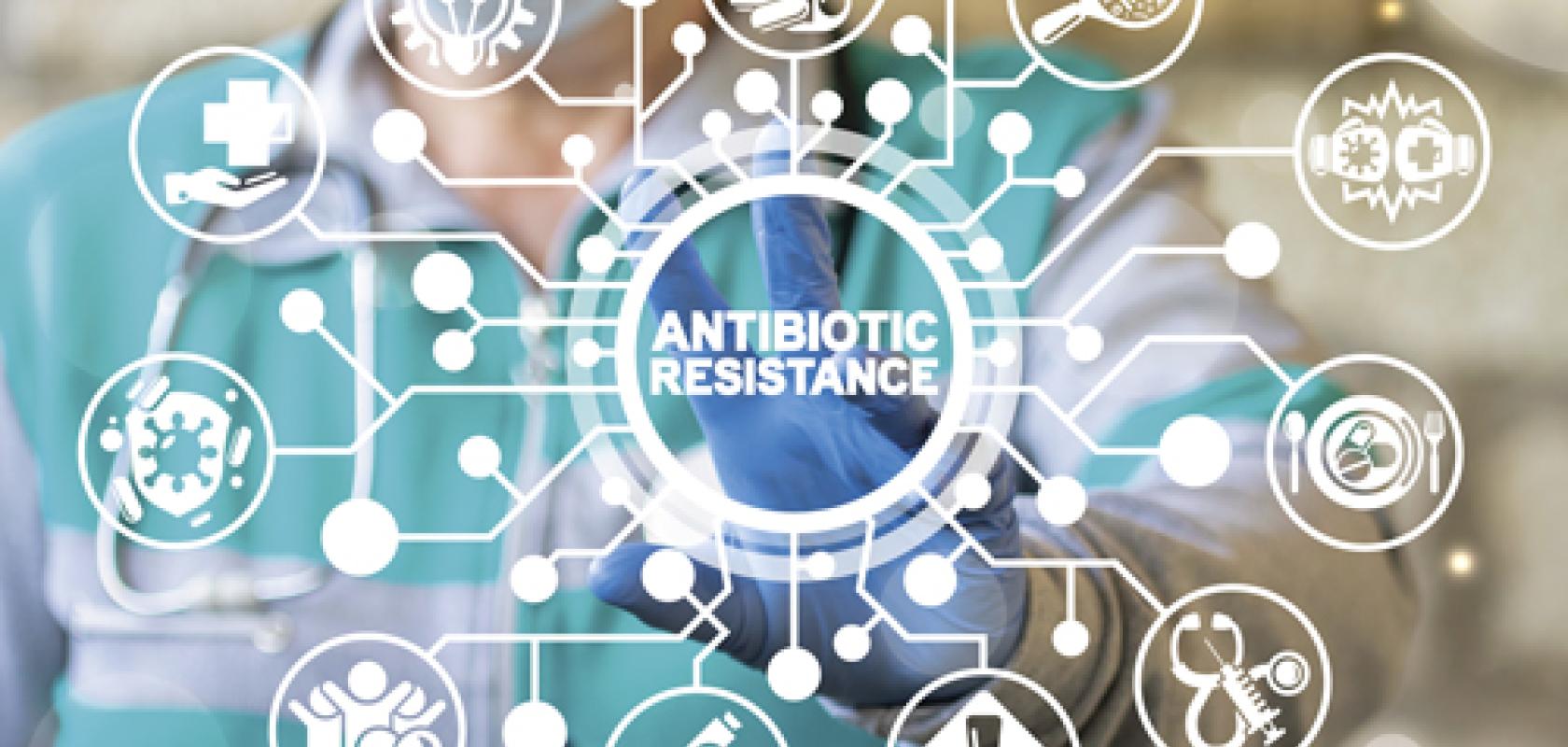Dame Sally Davies, the outgoing Chief Medical Officer for England, pulls no punches when it comes to the threat of antibiotic resistance. She has called for an ‘Extinction Rebellion-type’ response to it, describing it as ‘catastrophic’ and ‘as dangerous as climate change’. And climate change makes a clear parallel with antibiotic resistance in another way: there has been progress in tackling it, but that progress is incremental and can seem glacially slow compared to the growing need.
2018 was something of a record year for drug approvals at the FDA. It saw 42 new molecular entities (traditional ‘small-molecule’ drugs) and a further 17 new biological molecules, such as therapeutic antibodies for cancer, enter the clinic for the first time: the highest total since the agency started keeping count in 1993. However, relatively few of these were anti-infectives and only six were for bacterial infections. And, without exception, all these six were what is called ‘me too’ drugs: molecules in known chemical classes with known mechanisms of action. These generally confer only marginal clinical benefit over the drugs already available and, furthermore, bacteria can develop resistance to them in much less time than they do to drugs with completely new targets and mechanisms.
The extensive report that former UK prime minister David Cameron commissioned in 2014 from Jim O’Neill, was one of several initiatives earlier this decade to help kick-start such progress, as there has been, in combating resistant bacteria. Five years on, a progress report has listed nine current ‘ambitions for change’. The second of these, ‘drive innovation’, covers all aspects of drug discovery and development. And progress in innovation there has certainly been. In what is actually a largely pessimistic editorial, the director of the Wellcome Trust, Jeremy Farrar, highlighted the value of the ‘exciting crop of [small] biotechs that are now driving antibiotic innovation.’ A number of these focus on computer-based drug discovery methods. Since the last time this issue was covered in Scientific Computing World, just over 18 months ago, the companies featured there – Oxford Drug Design and Forge Therapeutics – have both been making steady progress.
Computational research
University of Oxford spinout firm Inhibox became Oxford Drug Design (in 2017 when it changed its focus to designing drugs for antibiotic-resistant infections. Its rationale involves searching enormous compound databases for molecules that are likely to bind to target proteins, using novel algorithms that recognise molecular shape extremely fast. During 2019 it has received four large grants totalling more than £9m towards its two main drug discovery programmes, targeting the bacterial enzymes aminoacyl tRNA synthase and histidine kinase. ‘Our small office is devoted to computational work, and it is neither feasible, nor desirable, to apply these resources to expanding our servers and hiring informatics staff,’ says the company’s CEO, Paul Finn. ‘Instead, we expect to invest most of this welcome funding in work with contract research organisations to confirm – or otherwise – predictions made using our algorithms.’
The most recent of these grants came from a dedicated fund set up by the UK’s Department of Health and Social Care for collaborations with China. It was awarded to a consortium that includes the University of Portsmouth and two Chinese partners, which is using the firm’s algorithms to search for small molecules, including components of traditional Chinese medicines, that might be effective against the bacterium Streptococcus suis, which infects pigs.
‘Pork production is a huge industry in China. Pigs there are often given broad-spectrum antibiotics, both as prophylactics against infection and as growth promoters,’ explains Finn. ‘This widespread antibiotic use encourages resistance to develop; the alternative of treating pigs with an antibiotic that is specific for their infection is likely to be safer for both pigs and humans.’
This use of a design pathway that has matured in response to the need to tackle human infections to develop a veterinary medicine is an innovative response to a further ‘ambition for change’: protecting animal health and welfare. Separately, the company has hired a PhD student trained in image analysis for topological mapping and security applications to further enhance their proprietary 3D shape recognition algorithms.
Forge Therapeutics, based in San Diego, California, is also accelerating its development programmes, using its proprietary, fragment-based Blacksmith technology to model inhibitors that bind to bacterial metal-binding enzymes as candidate drugs. ‘We have worked in collaboration with bio-inorganic chemists and medicinal chemists to grow and improve our specialist fragment library’, says Forge’s COO, David Puerta.
The firm has also optimised its modelling pipeline and aims to take a lead molecule into clinical development for severe urinary tract infections in 2020; a second programme targeting severe lung infections with Pseudomonas bacteria has reached the lead optimisation stage.
Investing in innovation
The success of companies like Forge and Oxford Drug Design in early-stage antibiotic discovery indicates that there is no shortage of innovation in this sector. There are, in fact, significantly more antibacterial compounds being developed than there were a few years ago, largely thanks to increasing investment in the industry by public bodies, research charities and philanthropists.
The largest such investor is probably the global not-for-profit accelerator Carb-X, which has so far made more than 50 awards to companies working on early-stage antibiotic development to the tune of about $150m; Forge is one of only a few companies to have received two such grants. ‘With the current economic state of antibiotic development, ‘push’ mechanisms for new antibiotic programmes, such as Carb-X, aren’t nice-to-haves: they are essential’, says Puerta. ‘Without them, there would be next to zero innovation in this space.’
But these developments, however welcome, have not solved the problem of funding antibiotic development; rather, they have simply pushed the bottleneck further down the pipeline. As Peter Jackson, executive director of the AMR Centre in Alderley Park, UK, says, starkly, ‘the reimbursement side of the market [for AMR (anti-microbial resistance) drugs] is broken: the reward available for antibiotic development and commercialisation falls considerably short of its cost.’ Therefore, even getting a drug to market may not be enough to save a small company. Achaogen, a San Francisco-based biotech, launched its aminoglycoside antibiotic, plazomicin, onto the market for complicated UTIs in 2018; less than a year later, it had filed for Chapter 11 bankruptcy.
The main reason the current economic model of drug development is broken when applied to antibiotics is the way in which they must be used. A novel antibiotic is not like a new drug for arthritis or heart disease, with an immediate potential market of millions of patients. Bacteria can develop resistance to new drugs as soon as they are exposed to them, so it makes sense to keep novel drugs back until others fail. A new antibiotic is more like a new fire extinguisher, bought to hang on the wall until a fire breaks out. And convincing companies – particularly risk-averse big pharma – to take a drug through expensive clinical trials to, perhaps, sit unused on a shelf for years, is understandably difficult.
Among the few larger companies with serious antibiotic pipelines are the Japanese company Shionogi, which is partnering with the AMR Centre to take a novel antibiotic to Phase III trials, and Basilea, based in Basel, Switzerland, which has formed a close collaboration with Forge. Such companies are forward-looking enough to realise how badly the spread of antibiotic resistance might affect their work in other therapeutic areas. And Jackson has noticed that some companies are beginning to re-brand antibiotic development, for example positioning drugs for recurrent lung infections in their respiratory franchise. ‘We now often refer to AMR drugs, rather than antibiotics, to try to emphasise these targeted cross-relationships with other disciplines,’ he adds.
Encouraging as such large-company initiatives are, they can only ever provide a partial solution to the ‘broken’ antibiotic pipeline. So-called ‘pull’ incentives for antibiotics – de-linking reimbursement from sales volumes by, for example, providing a substantial reward at the point a drug is licensed or using a subscription model – will be just as necessary as the ‘push’ incentives provided by Carb-X and translational support offered by the AMR Centre. There are few incentives.
Open source alternatives
Matthew Todd, a professor at the UCL School of Pharmacy, London, set up a radical, open source alternative to commercial drug development when he was at the University of Sydney, initially concentrating on malaria and neglected tropical diseases. This is a collaborative approach, using a similar model to Wikipedia: all contributions are voluntary, all information and results are kept freely available, and anyone with knowledge and skills is welcome to share them.
Such an open source project may start from the screening of libraries of large numbers of molecules against validated target proteins using both in silico and in vitro methods, with all results deposited in open, online lab notebooks. ‘This approach can bring anyone on board, even young students in high school chemistry classes and their teachers’, says Todd.
His first antimicrobial open source project is a pilot one with a novel target: bacterial proteins in the Mur ligase family. These are enzymes that catalyse the reactions that string together amino acids to make the cross-links stabilising bacterial cell walls. ‘These enzymes are great targets’, says Todd. ‘Just like a penicillin, a Mur ligase inhibitor would break up the bacterial cell wall, killing the bacteria. Crucially, humans have no cell walls, so the drugs should, if we’re lucky, have few side effects.’ Two pharma companies set up drug discovery programmes targeting Mur ligases, and both were stalled, so this area is surprisingly little explored.
Todd set up the Mur ligase project with Warwick microbiologist Chris Dowson, Frank von Deflt’s group at Diamond Light Source and cheminformatics specialist Chris Swain. It involves solving crystal structures to locate small chemical fragments bound to active sites of Mur enzymes, with docking and cheminformatics tools to elaborate and build on hits. ‘We have found some interesting molecules but are looking for new compounds to screen, and further cheminformatics tools to help with docking and compound elaboration, particularly straightforward ones for chemists who are not experts in this area to learn,’ says Todd.
Making results available without patent protection should, again, lead to time and cost savings compared to conventional early-stage drug discovery. But no drugs developed this way have made it to the clinic. It is too early to gauge how effective this new paradigm will be in fixing the broken antibiotic pipeline. It is all but certain more complementary approaches will be needed.


